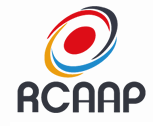Truffle mycorrhization in a pecan orchard
DOI:
https://doi.org/10.5433/1679-0359.2024v45n2p379Keywords:
Carya illinoinensis, Ectomycorrhiza, Truffle, Tuber.Abstract
The ectomycorrhizal association of Tuber spp. in orchards is essential for truffle production. In this sense, this study aimed to evaluate the ectomycorrhizal association of Tuber aestivum Vittad. and Tuber brumale Vittad. in pecan after five years of cultivation in an orchard. The experiment was conducted in Santa Maria - Rio Grande do Sul, Brazil, in a pecan orchard planted with seedlings inoculated with these two species of truffles. The orchard was characterized in terms of soil physical and chemical properties and soil type. Initially non-inoculated plants, plants inoculated with Tuber aestivum (TA), and plants inoculated with Tuber brumale (TB) were evaluated for the percentage (%) of roots colonized by Tuber spp., other ectomycorrhizae, and non-mycorrhizal roots. A reduction in the colonization of both truffle species was observed five years after transplanting the seedlings to the orchard but they have the potential to maintain the ectomycorrhizal association with pecan seedlings.
Downloads
References
Agerer, R. (1991). Characterization of ectomycorrhiza. In Norris, J.R., Read, D.J., Varma, A.K. Methods in microbiology (pp. 25-73). vol. 23. Munich, Germany.: Elsevier. doi: 10.1016/S0580-9517(08)70172-7
Agerer, R. (2012). Colour atlas of ectomycorrhizae (15nd.). Einhorn-Verlag Eduard Dietenberger.
Alvares, C. A., Stape, J. L., Sentelhas, P. C., Gonçalves, J. L. M., & Sparovek, G. (2013). Köppen's climate classification map for Brazil. Meteorologische Zeitschrift, 22(6), 711-728. doi: 10.1127/0941-2948/2013/ 0507 http://www.lerf.eco.br/img/publicacoes/Alvares_etal_2014.pdf
Benucci, G. M. N., Bonito, G., Falini, L. B., & Bencivenga, M. (2011). Mycorrhization of pecan trees (Carya illinoinensis) with commercial truffle species: Tuber aestivum Vittad. and Tuber borchii Vittad. Mycorrhiza, 22(5), 383-392. doi: 10.1007/s00572-011-0413-z
Bonito, G. M. (2009). Systematics and ecology of truffles (Tuber). Doctoral dissertation, Duke University, Durham, NC, United States. https://hdl.handle.net/10161/1631
Bonito, G., Brenneman, T., & Vilgalys, R. (2011). Ectomycorrhizal fungal diversity in orchards of cultivated pecan (Carya illinoinensis; Juglandaceae). Mycorrhiza, 21 (nº7), 601-612. doi: 10.1007/s00572-011-0368-0 https://link.springer.com/article/10.1007/s00572-011-0368-0
Bonito, G., Smith, M. E., Nowak, M., Healy, R. A., Guevara, G., Cázares, E., & Vilgalys, R. (2013). Historical biogeography and diversification of truffles in the tuberaceae and their newly identified southern hemisphere sister lineage. PloS ONE, 8(1), e52765. doi: 10.1371/journal.pone.0052765
Brundrett, M., Bougher, N., Dell, B., Grove, T., & Malajczuk, N. (1996). Working with mycorrhizas in forestry and agriculture. Australian Centre for International Agricultural Research. https://www.researchgate.net/ publication/227365112_Working_with_Mycorrhizas_in_Forestry_and_Agriculture
Chevalier, G. (2012a). Europe, a continent with high potential for the cultivation of the Burgundy truffle (Tuber aestivum/uncinatum). Acta Mycologica, 47(2), 127-132. doi: 10.5586/am.2012.014 https://www.researchgate.net/publication/272737151_Europe_a_continent_with_high_potential_for_the_cultivation_of_the_Burgundy_truffle_Tuber_aestivumuncinatum
Chevalier, G., & Frochot, H. (1990). Ecology and possibility of culture in Europe of the Burgundy truffle (Tuber uncinatum Chatin). Agriculture, Ecosystems & Environment, 28(1-4), 71-73. doi: 10.1016/0167-8809(90)90016-7
Chevalier, G., & Sourzat, P. (2012b). Soils and techniques for cultivating Tuber melanosporum and Tuber aestivum in Europe. In A. Zambonelli, & G. Bonito (Eds.), Edible ectomycorrhizal mushrooms (pp. 163-189). Berlin: Springer. https://doi.org/10.1007/978-3-642-33823-6_10
Comissão de Química e Fertilidade do Solo (2016). Manual de calagem e adubação para os Estados de Rio Grande do Sul e de Santa Catarina. Sociedade Brasileira de Ciência do Solo. https://www.sbcs-nrs.org.br/docs/Manual_de_Calagem_e_Adubacao_para_os_Estados_do_RS_e_de_SC-2016.pdf
Culleré, L., Ferreira, V., Chevret, B., Venturini, M. E., Sánchez-Gimeno, A. C., & Blanco, D. (2010). Characterisation of aroma active compounds in black truffles (Tuber melanosporum) and summer truffles (Tuber aestivum) by gas chromatography-olfactometry. Food Chemistry, 122(1), 300-306. doi: 10.1016/j. foodchem.2010.02.024
Culleré, L., Ferreira, V., Venturini, M. E., Marco, P., & Blanco, D. (2013). Potential aromatic compounds as markers to differentiate between Tuber melanosporum and Tuber indicum truffles. Food Chemistry 141(nº1), 105-110. doi: 10.1016/j.foodchem.2013.03.027
Fischer, C. R., Oliach, D., Bonet, J. A., & Colinas, C. (2017). Best practices for cultivation of truffles. Forest Sciences Centre of Catalonia. https://repositori.udl.cat/server/api/core/bitstreams/a3397d23-ebe9-49ed-a010-2db2f27f2ea0/content
Freiberg, J. A., Grebenc, T., Strojnik, L., Meireles, L. A., Jiménez, M. S. E., Richards, N. S. P. D. S., & Antoniolli, Z. I. (2023). Production and marketing of Tuber floridanum-ecology and gastronomic value of a recently described truffle species. Scientia Agricola, 80, e20220102, Piracicaba, SP, Brazil. doi: 10.1590/1678-992X-2022-0102
Freiberg, J. A., Sulzbacher, M. A., Grebenc, T., Santana, N. A., Schardong, I. S., Marozzi, G., & Antoniolli, Z. I. (2021). Mycorrhization of pecans with European truffles (Tuber spp., Tuberaceae) under southern subtropical conditions. Applied Soil Ecology, 168, 104108, 104-108. doi: 110.1016/j.apsoil.2021.104108
Fronza, D., Hamann, J. J., Both, V., & Anese, R. D. O., & Meyer, E. A. (2018). Pecan cultivation: general aspects. Ciência Rural, 48(2), 1-9. doi: 10.1590/0103-8478cr20170179 https://www.scielo.br/j/cr/a/r4GZhB8T6rWGKG8MnycpCjD/?lang=en
Fronza, D., Poletto, T., & Hamann, J. J. (2016). O cultivo da nogueira-pecã. Colégio Politécnico.
Grupe, A. C., Sulzbacher, M. A., Grebenc, T., Healy, R., Bonito, G., & Smith, M. E. (2018). Tuber brennemanii and Tuber floridanum: two new Tuber species are among the most commonly detected ectomycorrhizal taxa within commercial pecan (Carya illinoinensis) orchards. Mycologia, 110(4), 780-790. doi: 10.1080/00275514.2018.1490121 https://pubmed.ncbi.nlm.nih.gov/30130456/
Huey, C. J., Gopinath, S. C. B., Uda, M. N. A., Zulhaimi, H. I., Jaafar, M. N., Kasim, F. H., & Yaakub, A. A. R. W. (2020). Mycorrhiza: a natural resource assists plant growth under varied soil conditions. 3 Biotech 10(5), 204. doi: 10.1007/s13205-020-02188-3 https://pubmed.ncbi.nlm.nih.gov/32337150/
Instituto Brasileiro de Pecanicultura (2023). News Semanal IBPecan: as notícias que são destaque na pecanicultura. IBPecan https://www.ibpecan.org/post/news-semanal-ibpecan-as-not%C3%ADcias-que-s%C3%A3o-destaque-na-pecanicultura-82
Martins, C. R., Conte, A., Fronza, D., Alba, J. M. F., Hamann, J. J., Bilharva, M. G., Malgarim, M. B., Farias, R. M., Marco, R. de, & Reis, T. S. (2018). Situação e perspectiva da nogueira-pecã no Brasil. (Documentos, 462). EMBRAPA Clima Temperado. https://www.embrapa.br/busca-de-publicacoes/-/ publicacao/1100226/situacao-e-perspectiva-da-nogueira-peca-no-brasil
Martins, C. R., Fronza, D., Malgarim, M. B., Bilharva, M. G., Marco, R., & Hamann, J. J. (2017). Alternativas para a diversificação da agricultura familiar de base ecológica. (Documentos, 443). EMBRAPA Clima Temperado. https://www.embrapa.br/busca-de-publicacoes/-/publicacao/1081352/alternativas-para-a-diversificacao-da-agricultura-familiar-de-base-ecologica
Molinier, V., Bouffaud, M. L., Castel, T., Mounier, A., Colombet, A., Recorbet, G., & Wipf, D. (2013). Monitoring the fate of a 30-year-old truffle orchard in Burgundy: from Tuber melanosporum to Tuber aestivum. Agroforestry Systems, 87 (6), 1439-1449. doi: 10.1007/s10457-013-9649-2 https://www.researchgate.net/publication/257617655_Monitoring_the_fate_of_a_30-year-old_truffle_orchard_in_ Burgundy_From_Tuber_melanosporum_to_Tuber_aestivum
Morcillo, M., Sánchez, M., Mateu, J., Vidal, C., & Gracia, E. (2007). Open field inoculation with Tuber melanosporum and T. brumale on adult hazelnut groves. Proceeding of the International Workshop on Edible Mycorrhizal Mushrooms. Kunming, China. https://www.researchgate.net/publication/289507597_Open_field_inoculation_with_Tuber_melanosporum_and_T_brumale_on_adult_hazelnut_groves
Rubin, D. (2023). 5ª Abertura da Colheita da Noz-Pecan consolida Santa Maria como um dos maiores produtores do fruto. Instituto Brasileiro de Pecanicultura. https://www.ibpecan.org/post/5%C2%AA-abertura-da-colheita-da-noz-pecan-consolida-santa-maria-como-um-dos-maiores-produtores-do-fruto.
Santos, D. O. (2021) Tuber aestivum, Tuber floridanum e fósforo na produção de mudas de nogueira-pecã. Dissertação de mestrado, Universidade Federal de Santa Maria, Santa Maria, RS, Brasil. https://repositorio.ufsm.br/handle/1/22641
Santos, H. G., Jacomine, P. K. T., Anjos, L. H. C., Oliveira, V. A., Lumbreras, J. F., Coelho, M. R., Almeida, J. Á., Araújo, J. C., Fº., Oliveira, J. B., & Cunha, T. J. F. (2018). Sistema brasileiro de classificação de solos. https://www.embrapa.br/busca-de-publicacoes/-/publicacao/1094003/sistema-brasileiro-de-classificacao-de-solos
Sulzbacher, M. A., Hamann, J. J., Fronza, D., Jacques, R. J. S., Giachini, A. J., Grebenc, T., & Antoniolli, Z. I. (2019). Fungos ectomicorrízicos em plantações de nogueira-pecã e o potencial da truficultura no Brasil. Ciência Florestal, 29 (2), 975-987. doi: 10.5902/1980509827581
Teixeira, P. C., Donagemma, G. K., Fontana, A., & Teixeira, W. G. (2017). Manual de métodos de análise de solo. https://www.embrapa.br/busca-de-publicacoes/-/publicacao/1085209/manual-de-metodos-de-analise-de-solo
Todesco, F., Belmondo, S., Guignet, Y., Laurent, L., Fizzala, S., Le Tacon, F., & Murat, C. (2019). Soil temperature and hydric potential influences the monthly variations of soil Tuber aestivum DNA in a highly productive orchard. Scientific Reports, 9, 12964. doi: 10.1038/s41598-019-49602-2
Zambonelli, A., Iotti, M., & Hall, I. (2015). Current status of truffle cultivation: recent results and future perspectives. Micologia Italiana, 44 (2015), 31-40. doi: 10.6092/issn.2465-311X/5593
Downloads
Published
How to Cite
Issue
Section
License
Copyright (c) 2024 Semina: Ciências Agrárias

This work is licensed under a Creative Commons Attribution-NonCommercial 4.0 International License.
Semina: Ciências Agrárias adopts the CC-BY-NC license for its publications, the copyright being held by the author, in cases of republication we recommend that authors indicate first publication in this journal.
This license allows you to copy and redistribute the material in any medium or format, remix, transform and develop the material, as long as it is not for commercial purposes. And due credit must be given to the creator.
The opinions expressed by the authors of the articles are their sole responsibility.
The magazine reserves the right to make normative, orthographic and grammatical changes to the originals in order to maintain the cultured standard of the language and the credibility of the vehicle. However, it will respect the writing style of the authors. Changes, corrections or suggestions of a conceptual nature will be sent to the authors when necessary.


















